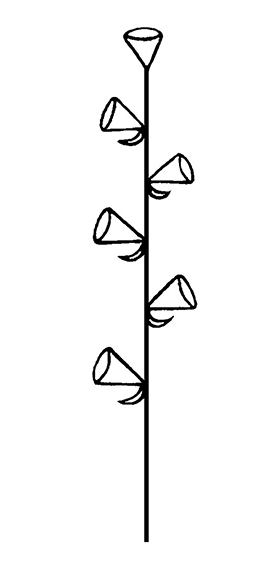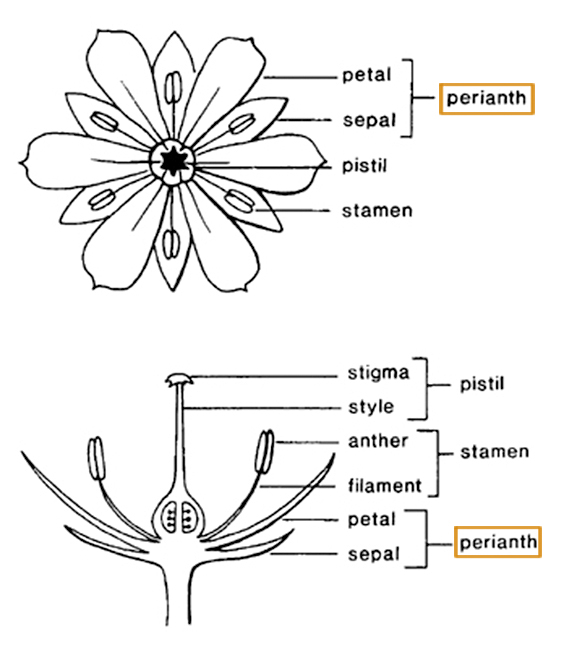Triglochin L.
water ribbon, arrow grass
Juncaginaceae
Crinum, Eleocharis, Isoetes, Vallisneria, Xyris
cosmopolitancosmopolitan:
(adj) essentially worldwide in distribution
Triglochin procera R. Br. [often offered as T. procerum]
Triglochin bulbosa L. is introduced into Australia.
T. striata Ruiz & Pav. is introduced into Portugal.
not weedy
submersedsubmersed:
see submerged
, floating, attached rosetterosette:
(n) a radiating cluster of leaves, usually close to the ground at the base of a plant
 plant
plant
Perennial. Stem compact, attached to submergedsubmerged:
(adj) (syn. submersed) under water; submerged below the water surface
substrate. Root tubers present. Leaves in a rosetterosette:
(n) a radiating cluster of leaves, usually close to the ground at the base of a plant
 , ribbon-like, spongy at least basally; marginmargin:
, ribbon-like, spongy at least basally; marginmargin:
(n) edge; rim
entire. Inflorescenceinflorescence:
(n) the arrangement of flowers on the floral axis
 an elongate spikespike:
an elongate spikespike:
(n) an indeterminate, unbranching inflorescence of sessile flowers or flower clusters on a usually elongated axis
 . Perianthperianth:
. Perianthperianth:
(n) collective term for the calyx and corolla of a flower; also used for floral whorl(s) in which the calyx and corolla cannot be resolved; any of the leaves or bracts surrounding the sex organs of bryophytes
 segments 6, concave, inconspicuous; stigmasstigma:
segments 6, concave, inconspicuous; stigmasstigma:
(n) the portion of the pistil that is receptive to pollen
plumose. Dispersal by seed.
streams, rivers, and swamps
A cosmopolitancosmopolitan:
(adj) essentially worldwide in distribution
genus with around 25 species, of which about ten are aquatic. Triglochin dubium R. Br., from northern Australia, has narrower leaves than T. procerum and is not cultivated for aquaria or ponds. Triglochin microtuberosum Aston and T. multifructum Aston were formerly included in T. procerum R. Br.
Recent taxonomic changes based on phylogenetic evidence suggest that some species of Triglochin should be moved to genera such as Maundia, Bulbine, Cycnogeton and Tetroncium.